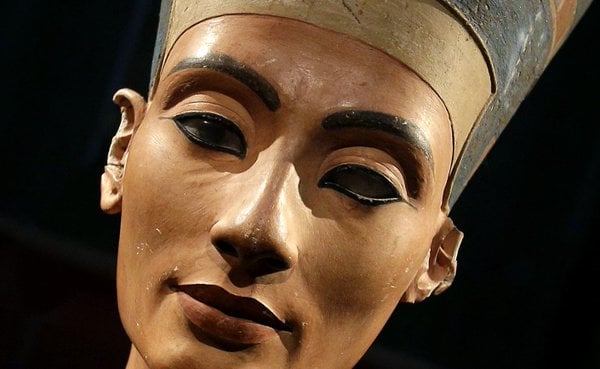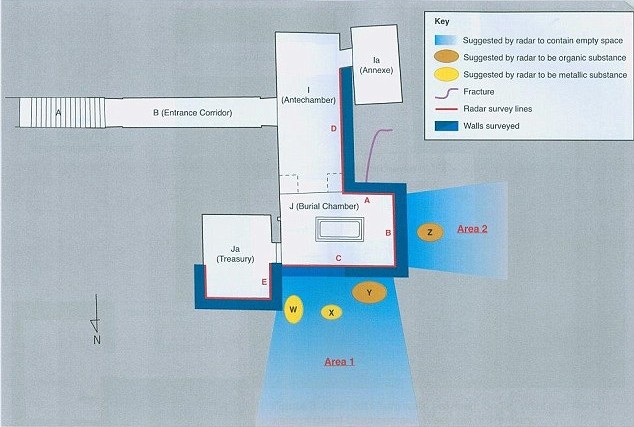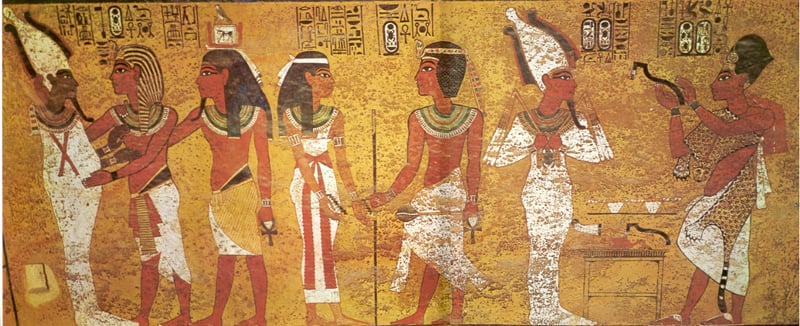Art & Exhibitions
Secret Chambers in King Tut’s Tomb Could Prove Nefertiti Served as Pharaoh
Archaeologists are 90 percent certain the secret rooms are there.

Archaeologists are 90 percent certain the secret rooms are there.

Sarah Cascone

After months of testing, researchers are on the brink of confirming the presence of a hidden chamber in King Tutankhamun‘s tomb, reports the New York Times. Indeed, based on the results of radar and infrared thermography scanning, archaeologists are now 90 percent certain that there are not one but two sealed-off secret rooms in the famed Egyptian tomb.
The possibility of hidden rooms was first raised in September by archaeologist Nicholas Reeves, who detected traces of a covered doorway when examining high-res scans of the tomb (taken to create a life-size copy of the space).
Related: Artists Return Nefertiti Bust to Egypt Thanks to Covert 3-D Scanning
At a press conference held Thursday in Egypt, antiquities minister Mamdouh Eldamaty called the rooms potentially “the discovery of the century.” Official announced that the latest scans suggest the presence of organic material in the sealed rooms, but were careful not to overstate their claim.
“I cannot say anything about the organic material. I can only say we have some organic material. Maybe. I don’t know,” said Eldamaty. “Maybe is not fact. It is maybe.”
In January, Reeves led a tour of a recreation of King Tut’s tomb at “The Discovery of King Tut,” an exhibition currently on view in New York, and pointed to the two areas where the secret chambers would be—secret chambers that will, in all likelihood, prove to be the final resting place of Queen Nefertiti. Historians believe she was briefly Egypt’s sole ruler, after serving as a junior pharaoh with her husband Akhenaten.

A presentation slide showing the known layout of King Tut’s tomb and the suspected site of the secret rooms.
Photo: the Egyptian Ministry of Antiquities.
Reeves believes that many of the burial objects in Tut’s tomb were originally intended for Nefertiti before her elevation to pharaoh. They include queenly iconography, like the feathered “rishi” pattern, more appropriate for a junior pharaoh.
Upon coming to power and taking the name Neferneferuaten, Nefertiti likely had abandoned these objects and begun work on a second tomb because “she was entitled to a fully-royal burial,” Reeves explained during the tour.

Archaeologist Nicholas Reeves believes this painting in King Tut’s tomb marked the closing of Nefertiti’s now-hidden burial chamber.
Photo: courtesy the University of North Carolina at Chapel Hill.
He pointed also to the stylistic differences between the paintings on the different walls of King Tut’s tomb, which are painted in different proportional scales. The wall that hides the secret chamber features a painting that Reeves believes “was the official closure of Nefertiti’s tomb.” Painting style had changed by the time that Tut was buried 10 years later, and the additional decorations were added.
“If there is something behind this wall, it isn’t just a a few bits and pieces, this is another Tutenkahmen,” Reeves told journalists in January. “None of us will know for certain until we actually look with our own eyes.”